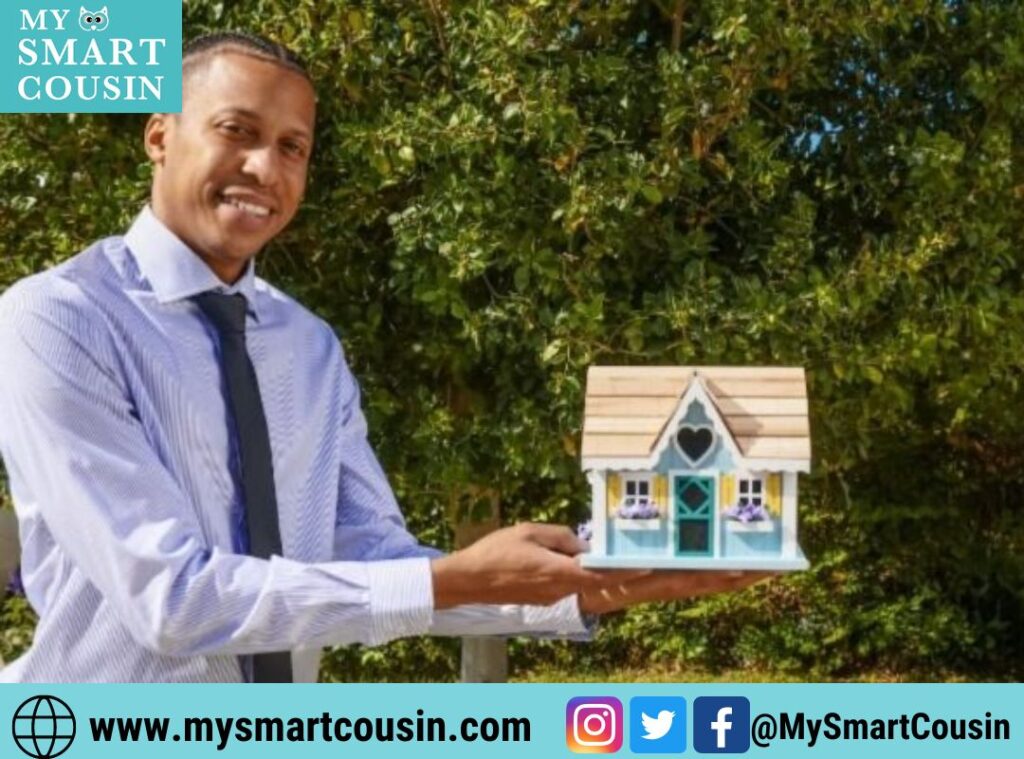Real estate investing has many strategies, but few are as popular and effective as the BRRRR method. BRRRR stands for Buy, Rehab, Rent, Refinance, and Repeat. This strategy allows investors to build a portfolio of rental properties while minimizing the amount of personal capital tied up in each deal. By recycling the same capital repeatedly, investors can scale their real estate portfolios efficiently.

We’re here to help you make your money work for you. MY SMART COUSIN specializes in providing tailored solutions that will suit any aspect of owning investment property, from buying a house for the price of a car, something that is still entirely within the realm of the possible, to managing these properties once you own them. As an experienced Real Estate Investment Coach, we help you develop and implement a real estate investment strategy. We work with all clients and focus particularly on Black and Brown folks and women, providing advice that helps you build generational wealth.
In this guide, we’ll break down each step of the BRRRR method, providing practical insights and tips to help you successfully implement this strategy in your real estate investing journey.
Buy: Acquiring the Right Property
Finding the Ideal Property
The first step in the BRRRR method is purchasing a property, ideally one that is undervalued or in need of some renovation. To maximize profits, investors should look for properties with potential for appreciation and rental income. Here are a few ways to find such properties:
- Foreclosures: Banks often sell foreclosed properties at a discount.
- Distressed Properties: Homes in poor condition can be acquired for less than market value.
- Off-Market Deals: Network with real estate agents and wholesalers to find properties not listed publicly.
Evaluating the Deal
Before purchasing, evaluate the property to ensure it meets your investment criteria. A key aspect of the BRRRR strategy is buying below market value. Use the following metrics:
- After Repair Value (ARV): Estimate the property’s value after renovations. This helps in calculating potential profits.
- Purchase Price: Aim to buy properties at 70% of the ARV minus repair costs.
- Repair Costs: Obtain quotes from contractors to understand the total cost of renovations.
Rehab: Adding Value to the Property
Planning the Renovation
Once the property is acquired, the next step is to rehabilitate it. The goal is to add enough value to the property through renovations that will increase its market value and rental potential. Focus on improvements that offer the highest return on investment (ROI):
- Kitchens and Bathrooms: Upgrading these areas can significantly boost the property’s value.
- Curb Appeal: Enhancing the exterior with landscaping, paint, and minor repairs attracts potential tenants.
- Structural Repairs: Address any major issues like roofing, plumbing, or electrical systems to make the property livable and safe.
Budgeting for the Rehab
Careful budgeting is crucial during the rehab phase. Avoid overspending by setting a realistic budget based on:
- Repair Estimates: Get multiple quotes to ensure competitive pricing.
- Contingency Fund: Set aside 10-15% of the budget for unexpected expenses that may arise during renovations.
Rent: Generating Cash Flow
Setting the Right Rent Price
After the rehab is complete, it’s time to rent out the property. Setting the right rental price is essential to attract quality tenants and generate positive cash flow. Here’s how to determine the optimal rent:
- Market Research: Analyze comparable rental properties in the area to gauge the average rent.
- Expenses: Ensure the rent covers monthly expenses like mortgage payments, insurance, property taxes, and maintenance.
Finding Quality Tenants
Finding reliable tenants is key to maintaining a steady cash flow. To attract and retain good tenants:
- Screen Applicants: Conduct background checks, credit checks, and verify employment and references.
- Lease Agreement: Draft a comprehensive lease agreement outlining the terms and conditions to protect your investment.
Refinance: Recapturing Your Investment

Understanding the Refinance Process
Refinancing is a crucial step in the BRRRR method. It allows you to pull out your initial investment and use it for your next property purchase. Here’s how it works:
- New Appraisal: Once the property is rented and stabilized, get it appraised. The goal is to have the property appraised at a higher value due to the improvements.
- Cash-Out Refinance: Apply for a cash-out refinance loan, which lets you borrow against the property’s new appraised value. Use these funds to pay off the original mortgage and recoup your rehab costs.
Timing Your Refinance
Timing is key when it comes to refinancing. Wait until you have a solid rental history (typically 6-12 months) to show the property’s income potential. Lenders often require this track record to ensure the property is a sound investment.
Repeat: Scaling Your Portfolio
Using Recycled Capital
The final step in the BRRRR strategy is to repeat the process using the funds obtained from the refinance. By reinvesting this capital into new properties, you can scale your portfolio quickly without needing additional personal funds. The power of the BRRRR method lies in this ability to recycle capital.
Managing Multiple Properties
As you acquire more properties, efficient management becomes critical. Consider the following strategies:
- Property Management Software: Use software to streamline rent collection, maintenance requests, and tenant communication.
- Professional Property Managers: Hiring a property management company can save time and reduce stress as your portfolio grows.
Pros and Cons of the BRRRR Method
Advantages
- Maximized Returns: By purchasing below market value and adding improvements, you create forced appreciation, leading to higher equity.
- Portfolio Growth: The ability to recycle capital enables you to acquire more properties in a shorter time.
- Cash Flow: Renting the property provides ongoing income, enhancing your financial stability.
Challenges
- Time-Intensive: The BRRRR method requires significant time and effort, particularly during the rehab phase.
- Market Risks: Property values can fluctuate, impacting the success of refinancing.
- Financing Hurdles: Securing a refinance can be challenging if the property doesn’t appraise as expected or if rental income is insufficient.
. Tips for Success with the BRRRR Method
- Build a Strong Network: Develop relationships with real estate agents, contractors, and lenders who understand the BRRRR strategy.
- Stay Educated: Continuously learn about market trends, investment strategies, and financing options.
- Start Small: Begin with a smaller property to gain experience before tackling larger investments.
THE BOTTOM LINE
The BRRRR method is a powerful real estate investing strategy that can help you build a scalable and profitable rental portfolio. By buying undervalued properties, adding value through strategic rehabs, generating rental income, and refinancing to pull out your investment, you can create a cycle of continuous growth.

While the BRRRR strategy requires careful planning, diligent management, and a willingness to take calculated risks, it offers a proven pathway to financial freedom and long-term wealth in real estate investing. By following this step-by-step guide and implementing the tips for success, you can confidently embark on your BRRRR investing journey and turn your real estate aspirations into reality.
YOU CAN ALSO READ: HOW TO FIND A REAL ESTATE INVESTING MENTOR IN 2024
FOLLOW US: @MYSMARTCOUSIN
